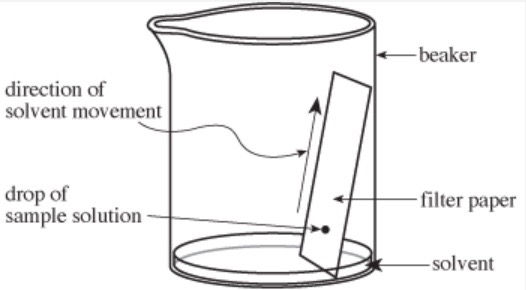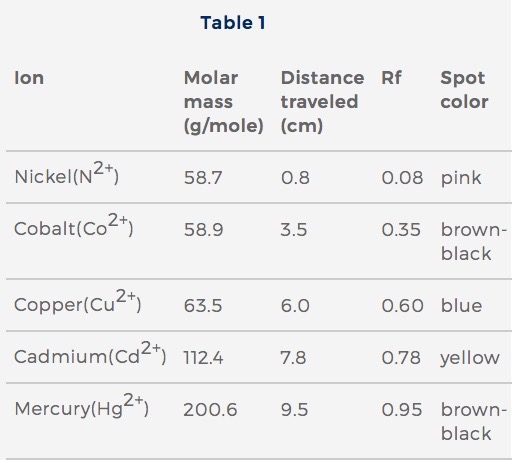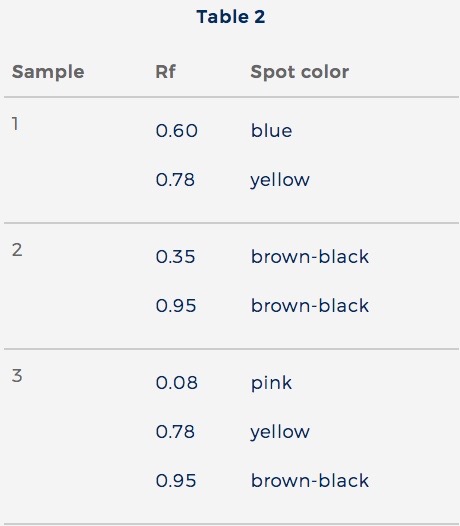Section: Science
159)
Paper chromatography can be used to identify metal ions in wastewater. A drop of sample solution is placed on filter paper. The bottom of the paper is set in a solvent that travels up the paper (see Figure 1).

The solvent carries the ions up the paper. Some ions move faster, and therefore farther than others, resulting in a separation as they move up the paper. The paper is dried, then stained, causing the ions to appear as colored spots. Rf values are calculated for each spot:

Table 1 shows Rf values for 5 ions. Table 2 shows Rf values from 3 samples of wastewater. The same solvent was used for all ions and samples.

Table 1 adapted from Thomas McCullough, CSC, and Marissa Curlee, “Qualitative Analysis of Cations Using Paper Chromatography.” ©1993 by the American Chemical Society.
Note: Samples contain only the metal ions listed in Table 1.

Based on the information in Table 1, which of the following lists the metal ions in order from the fastest to slowest speed with which they moved up the paper?
-
-
-
-
Explanation
Answer 1 is correct. As the Rf value increased, the speed that an ion moved up the paper also increased. Hg2+ had the largest Rf, so Hg2+ traveled the fastest. Cd2+ had the second largest Rf, so Cd2+ traveled the second fastest. Cu2+ was the third fastest. Co2+was the fourth fastest. Ni2+ was the slowest of the 5 ions.